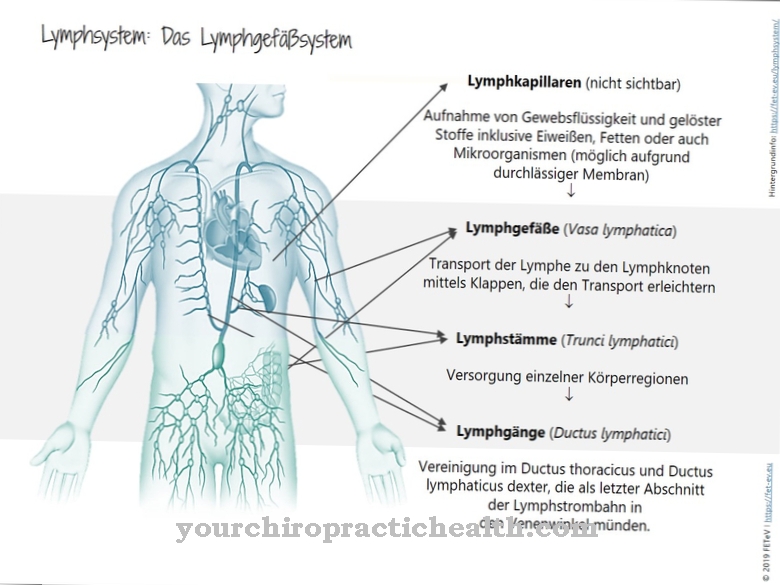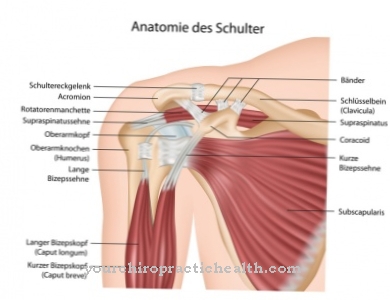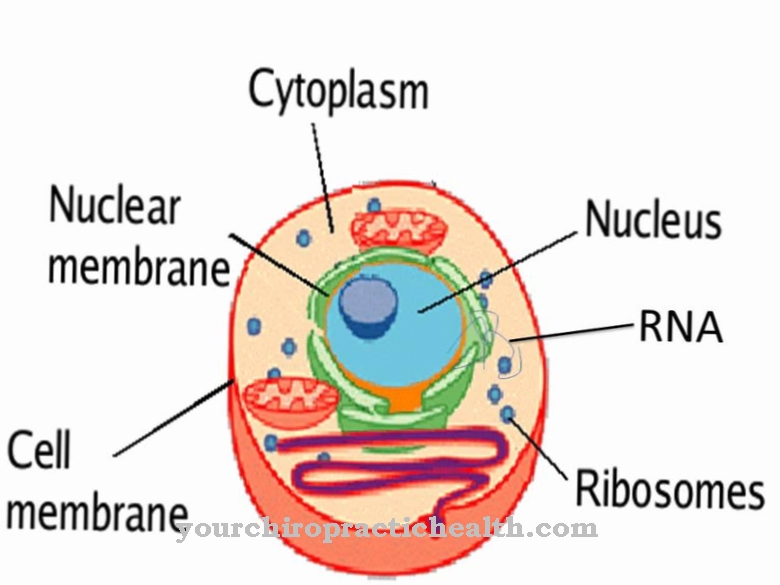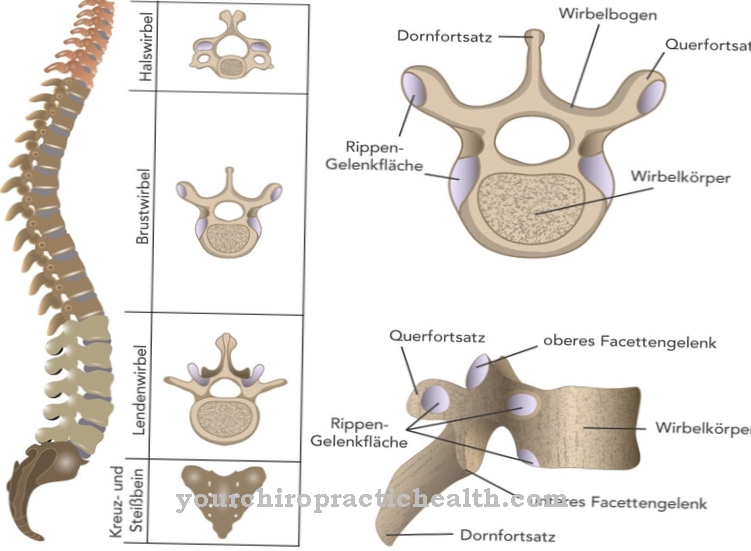As the name suggests, it is Ear canal a passage in the ear that plays a crucial role in hearing. A distinction is made between the inner ear canal and the outer ear canal.
What is the ear canal?

At the Ear canal it is a passage that is relevant for the sense of hearing.
There are two types of such ducts in the human ear, one being responsible for the passage of relevant nerves and blood vessels towards the brain and the much more familiar one describing the entrance to the ear.
Both ear canals are extremely important for hearing. What happens when they are blocked is shown by the symptoms of an earwax plug or acoustic neuroma.
Anatomy & structure
The term Ear canal can denote two different passages that run within the human ear. A distinction is made between the "internal auditory canal" (Meacus acustis internis) and the "external auditory canal" (Meacus acustis externis). According to its name, the auditory canal can be assigned to the inner ear or the outer ear.
The external auditory canal, belonging to the outer ear, connects the auricle with the eardrum. It measures around 3.5 cm in length, has a diameter of 5 mm and is the direct entrance into the ear that is visible from the outside. It is made up of cartilage on the outside and bones on the inside.
The inner auditory canal, on the other hand, runs completely in part of the skull, the so-called petrous bone, and opens into the posterior fossa.
Function & tasks
During the inner Ear canal forms the passage for important facial and auditory nerves (Facial nerve, Cochlear nerve, vestibular nerve) and blood vessels (Arteria labyrinthi) into the interior of the skull, the external auditory canal is important for the transport and amplification of sound.
This amplification takes place in natural resonance and is also referred to as "Open Ear Gain" (OEG). It is interesting here that certain wavelengths are amplified more strongly than others - in particular the frequency range from 2 to 5 kilohertz experiences a gain of up to 20 decibels. The overtones of the human voice, which are extremely relevant for speech understanding, also lie in this area.
In particular, female and child voices fall into this frequency spectrum, which is one of the reasons for preferring female voices to be used for calling out passengers and making similar announcements.
In addition to this direct function, the external auditory canal also has important protective mechanisms such as bristle hairs (tragi) and sebum glands. The bristle hairs protect the ear mechanically against the ingress of foreign bodies or insects and the sebum transports dead skin, dust and dirt particles out again with the ear wax (cerumen). In addition, this ear wax also contains components that keep insects away and fight or even kill bacteria or fungi and thus keep the ear canal free.
Illnesses & ailments
Especially with the earwax of the Ear canal However, some problems can also arise - it often happens that improper cleaning (for example with a cotton swab) or overproduction of ear wax creates a plug that severely restricts hearing.
Fortunately, the resulting hearing loss is only temporary and can be cured by the attending physician by removing the so-called Ceruminal plug.
Another common form of the disease is inflammation of the external ear canal, the so-called "otitis externa" (not to be confused with the otitis media "otitis media"). This disease can also be favored by improper removal of the ear wax: If the ear canal loses its protective coating, it is more susceptible to bacteria and viruses.
The result is the partial or complete infection of the ear canal and the associated severe earache, itching, redness and possibly even a temporary hearing loss.
Fungal infections of the ear canal are particularly uncomfortable, although much less common. Once spread, these are extremely persistent and usually require lengthy therapy with repeated treatment. Aspergillus niger, a blackish mold that urgently needs medical attention, is particularly aggressive here.
In the area of the internal auditory canal, acoustic neuromas in particular, benign tumors formed by Schwann's cells, lead to disturbances in perception. These mainly affect the hearing (hearing loss or ringing in the ears) and the sense of balance (dizziness).
Another name for tumors of this type is vestibular schwannoma, named after the vestibular nerve, from whose Schwann cells it is formed in order to ultimately narrow the ear canal.
You can find your medication here
➔ Medicines for earache and inflammation
























.jpg)



